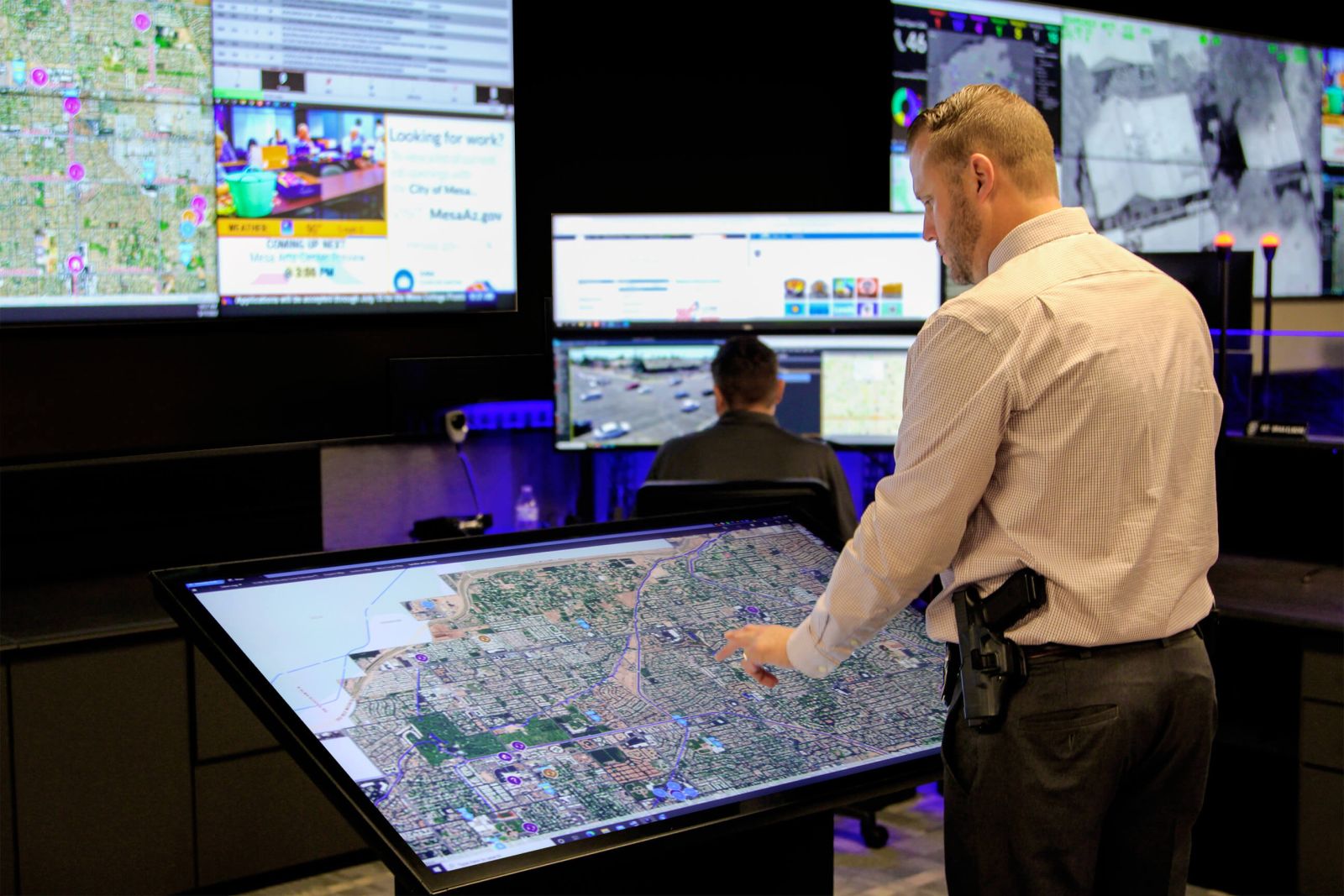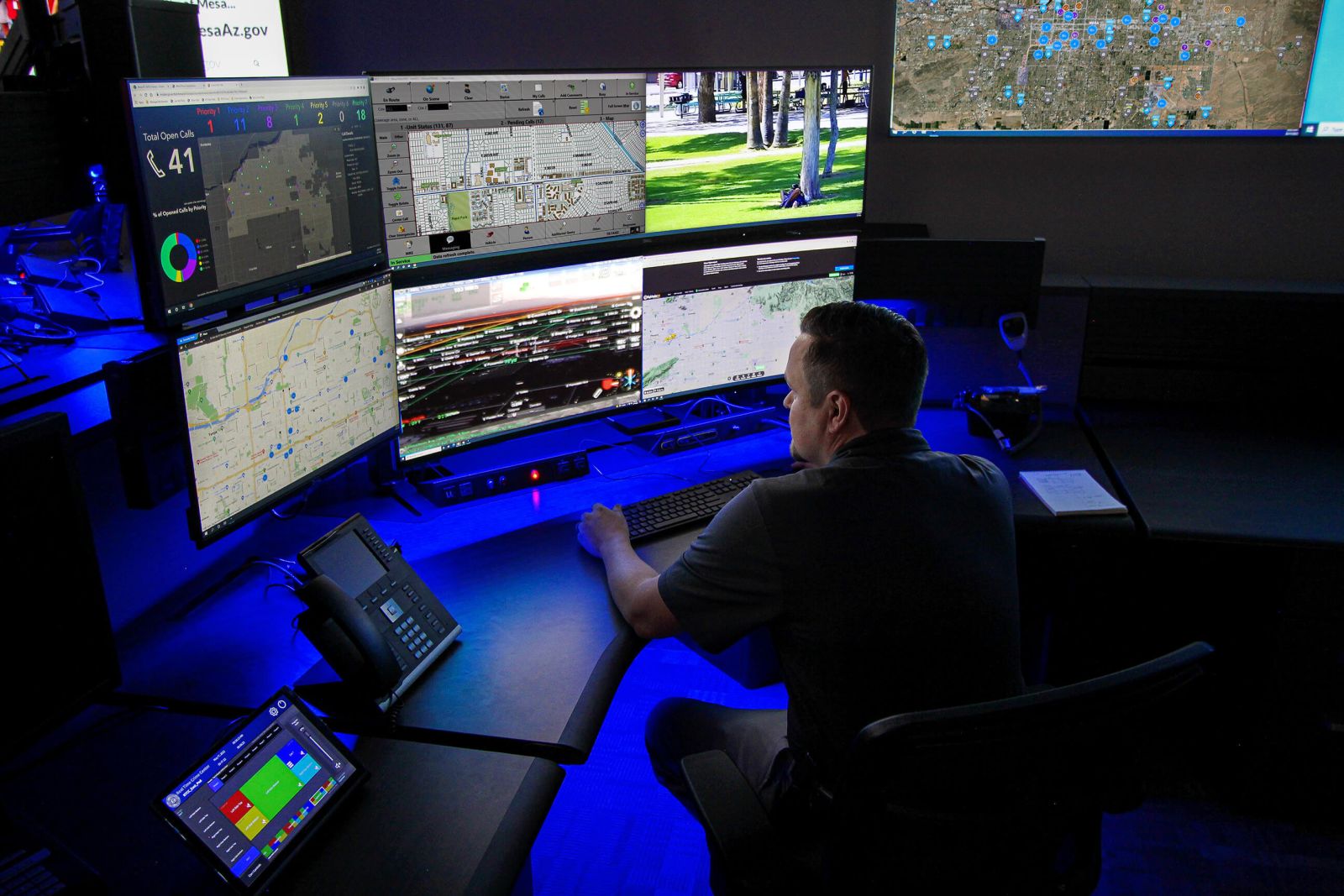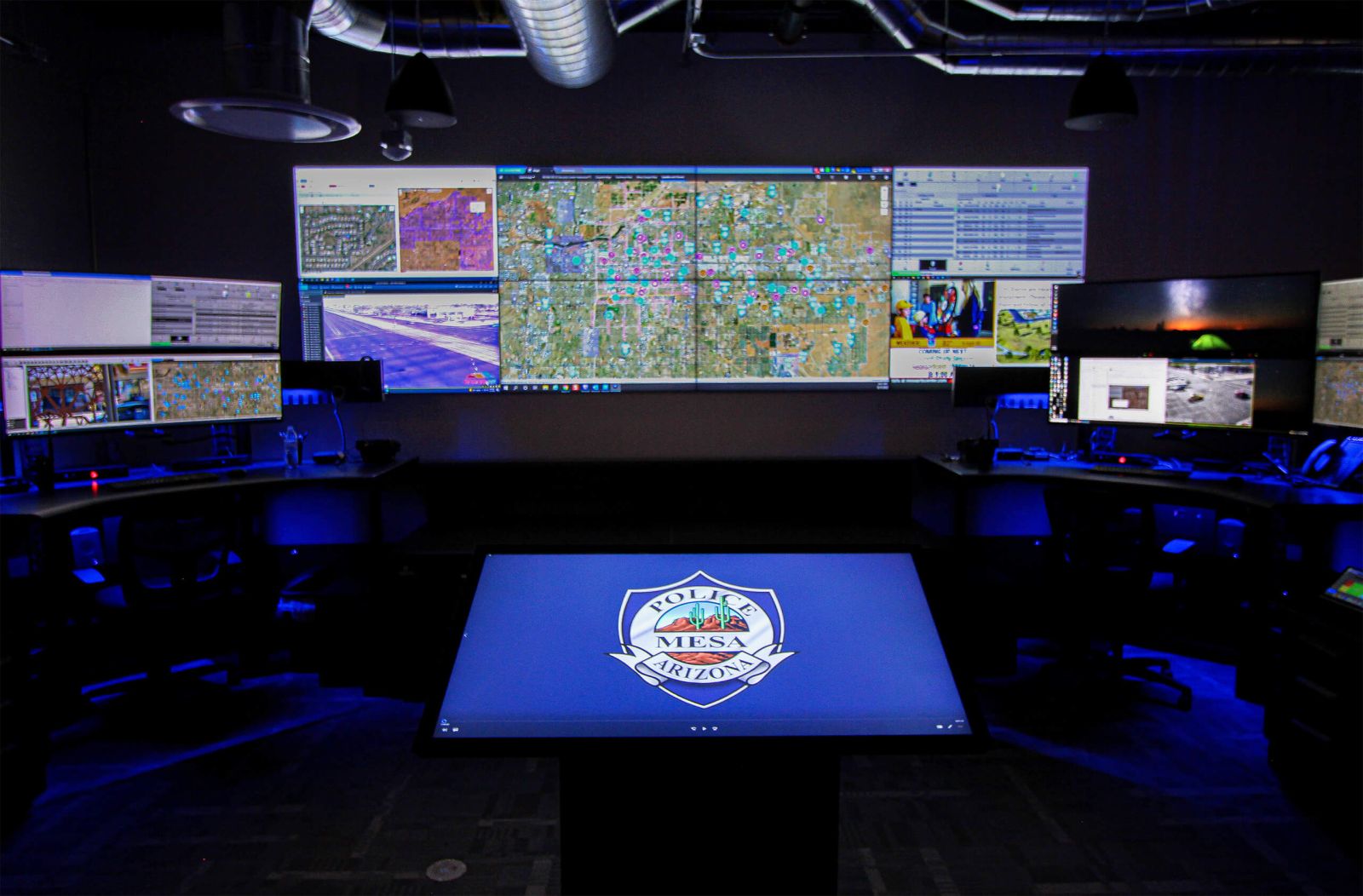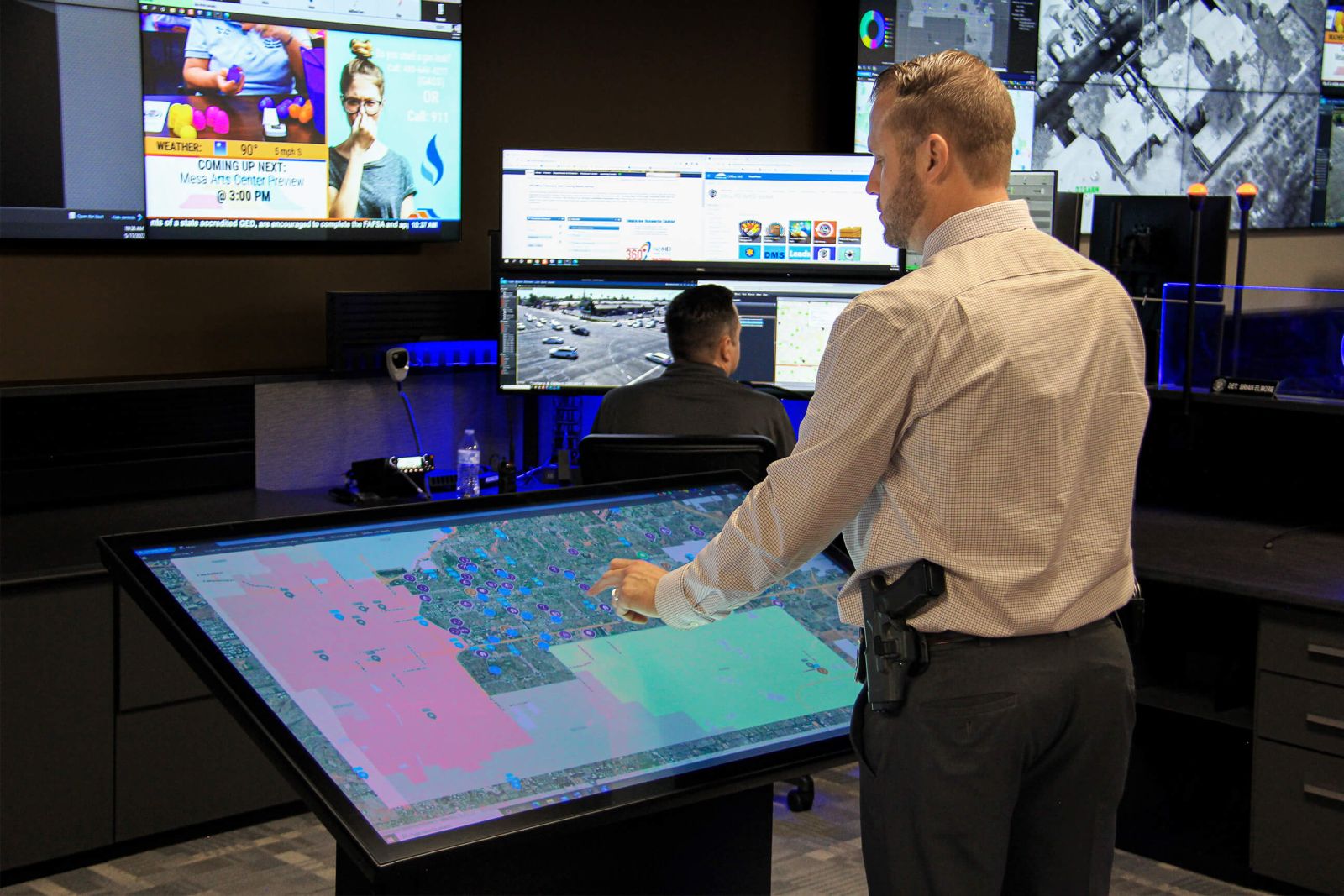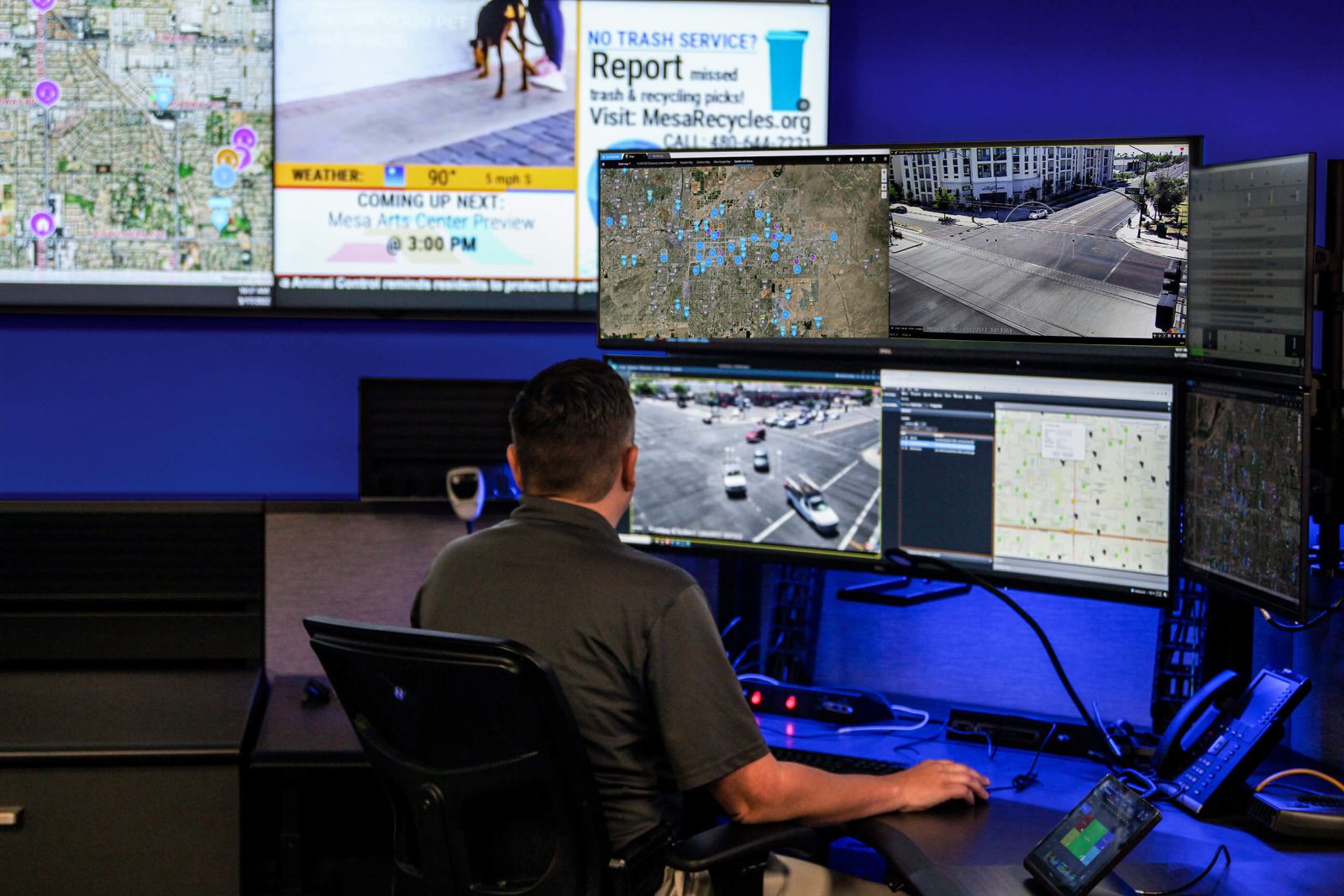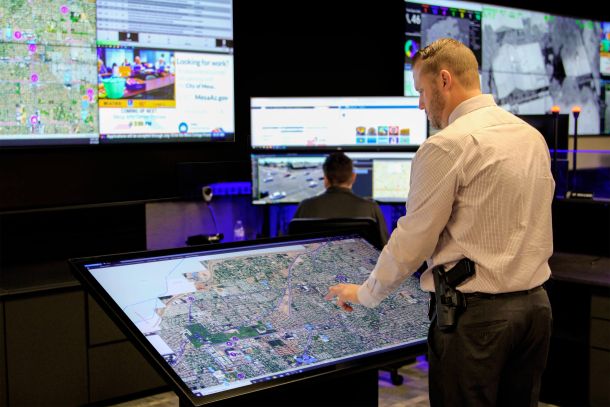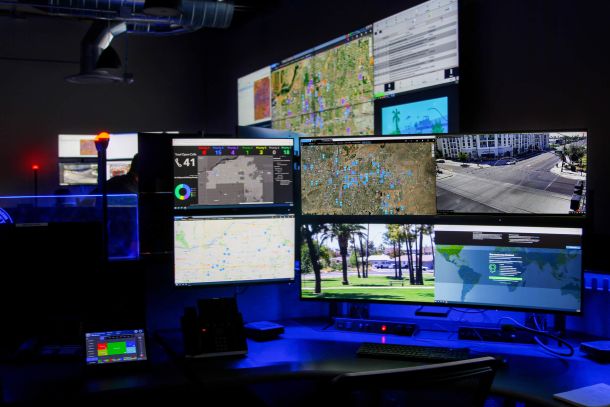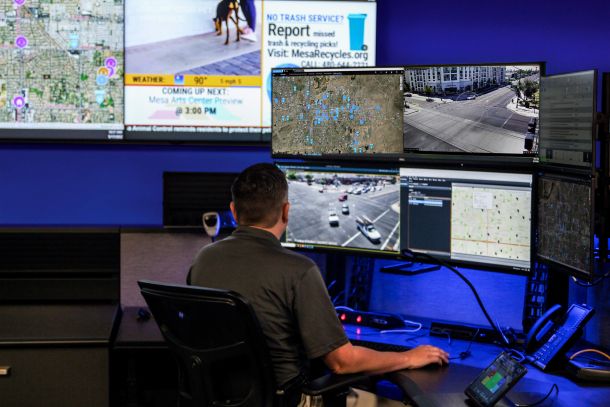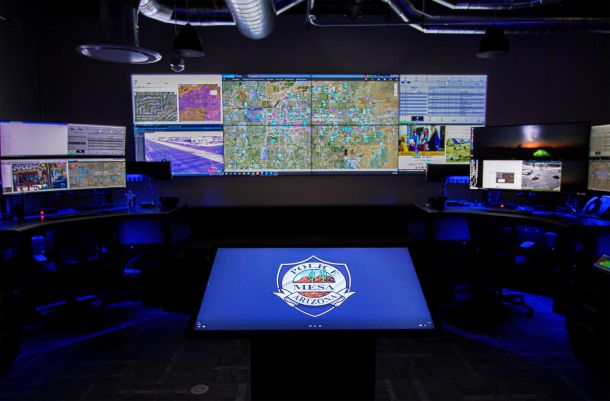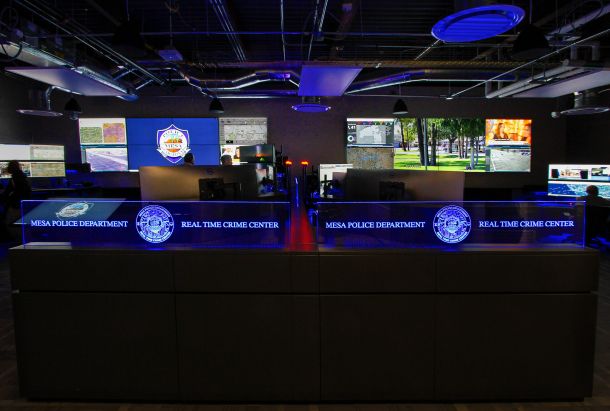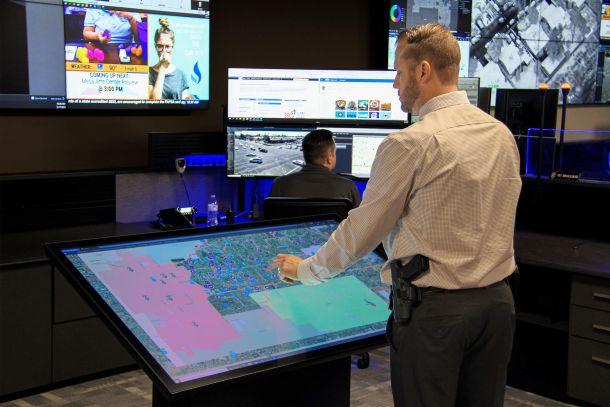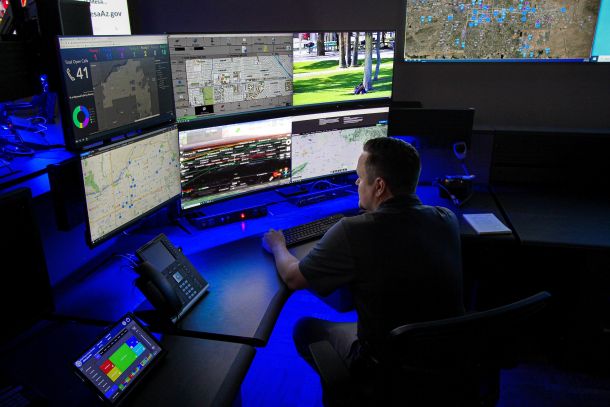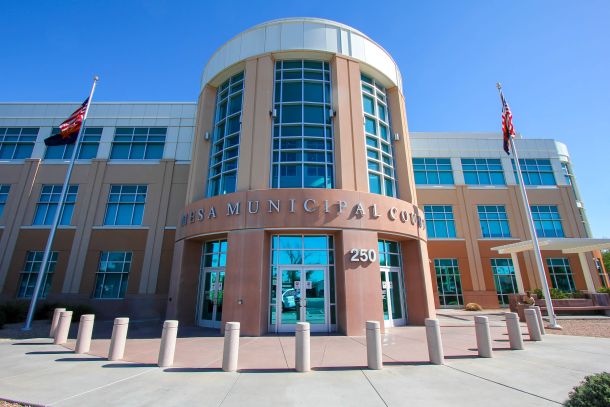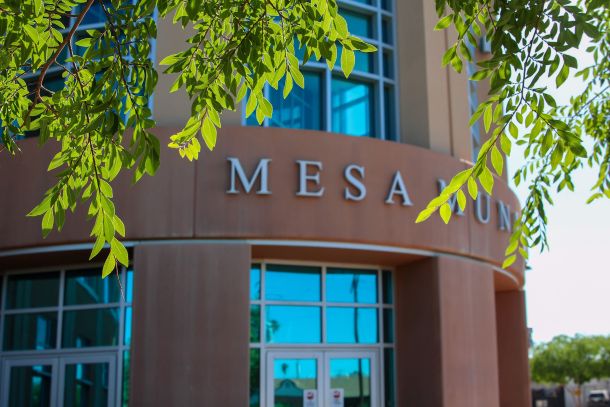REAL TIME CRIME CENTER
How Mesa PD Built a Future-Ready Real Time Crime Center to Enhance Safety and Response
Introduction: The Stakes
Mesa Police Department needed more than a technology refresh. Their existing Tactical Operations Center couldn’t provide complete situational awareness, leaving officers without the real-time intelligence required to protect the community effectively. Enterprises running NOCs or EOCs face the same pressure, where downtime or fragmented systems can mean financial, reputational, or safety risks.
To solve this, Mesa PD partnered with Level 3 Audiovisual to build a next-generation Real Time Crime Center (RTCC) that combined precision integration, future scalability, and ease of use under mission-critical conditions.
The Problem
Mesa PD’s legacy setup offered fragmented systems, limited video wall capacity, and incomplete visibility across platforms like live camera feeds, incident mapping, and Genetec Citigraf. Without a centralized hub, coordination was slow, dispatchers struggled to piece together information from multiple sources, and officers in the field often lacked full context. This limited the department’s ability to respond quickly, react effectively to emergencies, and proactively prevent crime. In practice, it meant delayed response times, misaligned communication between units, and missed opportunities to intervene early.
This mirrors challenges across many sectors: how do you centralize live information, ensure reliability, and keep systems intuitive for operators working under intense pressure?
The Solution
Level 3 Audiovisual designed and delivered a solution focused on reliability, scalability, and user experience.
-
Large-Scale Visualization: A dual 2x4 video wall with 16 ultra-narrow bezel displays, nearly 32 feet wide, gives operators immediate visibility of multiple incidents at once, ensuring unparalleled situational awareness.
-
Flexible Networked AV Backbone: Any source can be routed to any display, with presets for single feeds, grouped displays, or full-wall command views. This flexibility means operators can adapt instantly to unfolding events, ensuring faster and smarter responses.
-
Intuitive Control: 10-inch touch panels at primary operator stations simplify complex routing with clear presets, reducing training time and operator stress so staff can focus on decisions, not technology.
-
Integrated Operations: The RTCC links directly with the Tactical Operations Center and the Chief’s Conference Room, unifying command and communication when coordination matters most.
-
Audio & Communications: DSP-driven audio and in-ceiling speakers ensure operators hear and respond clearly, even in chaotic situations, preventing miscommunication.
-
Remote Support: A secure Intel NUC allows the Level 3 Audiovisual support team to deliver rapid remote troubleshooting, minimizing downtime and ensuring continuity.
Every component was staged, tested, and validated under the AV9000-certified quality management system; a rigorous, auditable, repeatable process that reduces risk and guarantees consistency.
The Results
Mesa PD now operates a centralized hub that has transformed operations:
-
Dispatchers can view simultaneous incidents across the city and coordinate faster responses. For example, when multiple traffic accidents occur at once, operators can instantly split feeds and deploy units with clear direction.
-
Agencies collaborate seamlessly, sharing feeds and intelligence instantly. A burglary in progress can be paired with live CCTV from surrounding blocks, giving responding officers situational awareness before they arrive.
-
Situational awareness has improved dramatically, supporting proactive crime prevention and emergency management. When large public events take place, operators can monitor crowd movement and detect disturbances early, reducing risks before they escalate.
For corporate, healthcare, and education organizations, the Mesa RTCC demonstrates how mission-critical environments benefit from the same principles: visibility, reliability, and speed save time and lives.
Why Level 3 Audiovisual
The Mesa RTCC showcases what Level 3 Audiovisual delivers: reliability under pressure, repeatable quality, and long-term support—giving city leaders and executives confidence that their systems will work when it matters most. For mission-critical projects, the right integrator is as important as the technology itself.
Level 3 Audiovisual brings:
-
AV9000 Quality Standards: A rigorous, auditable process ensuring consistency and reducing errors.
-
Global Reach, Local Expertise: Experience supporting complex integrations worldwide.
-
Trusted in Mission-Critical Spaces: From police departments to Fortune 500 enterprises, organizations choose Level 3 Audiovisual when failure is not an option.
-
Extensive PMO Team: A dedicated project management office operating under PMP principles, ensuring projects are delivered on time, within scope, and to the highest quality standards.
Ongoing Support & Partnership
A mission-critical system is only as strong as the support behind it. Alongside the design and installation, Mesa PD engaged Level 3 Audiovisual for a proactive maintenance and support agreement. This ensures the RTCC continues to perform at peak capacity through:
-
Scheduled Well Checks: Bi-annual preventative maintenance visits to clean, test, and validate every system component.
-
On-Call Support: Unlimited technical phone assistance during business hours, with rapid technician dispatch if needed.
-
Remote Monitoring & Updates: Secure access for troubleshooting, firmware updates, and system optimization.
Many integrators hand off projects without a true support infrastructure. Level 3 Audiovisual distinguishes itself with a dedicated support department, ensuring long-term stability and peace of mind. For environments where downtime is not an option, ongoing service is just as important as the initial integration.
Conclusion
Mesa Police Department’s Real Time Crime Center is more than an AV installation. It’s a mission-critical command environment where technology, user experience, and reliability converge. For cities, campuses, and enterprises facing similar challenges, it underscores the importance of choosing the right integration partner.
